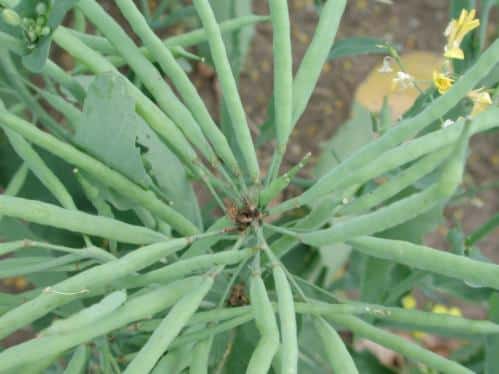Key Result
Swede midge, an invasive species, causes costly damage to canola in Ontario – but not on the Prairies at this time. Modeling found that when a high number of adults coincided with days of high temperatures, egg laying would increase and result in higher damage levels in the current year and outbreak-level populations in the subsequent year.
Project Summary
Effective pest management of the invasive swede midge, Contarinia nasturtii Kieffer, is hindered by the lack of development and mortality information in its invasive range.
This project had three main objectives:
(1) generate temperature-dependent development and mortality data for Ontario populations of C. nasturtii.
(2) revise an existing C. nasturtii life cycle model (MidgEmerge) with this information.
(3) utilize the new model (MidgEmergeII) to determine climatic contributors to C. nasturtii outbreak in its invaded range.
Temperature-dependent development and mortality rates were determined for all C. nasturtii life stages. This information, and robust adult count field data, were used to re-parameterize MidgEmerge and develop MidgEmergeII. Egg and larval development times were found to differ between Ontario and U.K. populations. The re-developed MidgEmergeII model accurately predicted C. nasturtii population dynamics in various southern Ontario locations.
Results indicate that there are three C. nasturtii emergence phenotypes and two to three generations in Ontario, in contrast to the previous model.
MidgEmergeII was then run with weather data from Ontario sites that experienced C. nasturtii outbreaks, and compared with those that did not. It was found that when a high number of adults coincided with days of high temperatures, egg laying would increase and result in higher damage levels in the current year and outbreak-level populations of adults in the subsequent year. These findings have implications for C. nasturtii management in its invasive range.






